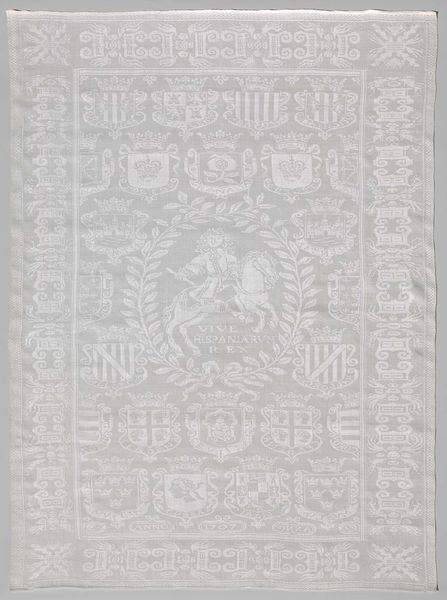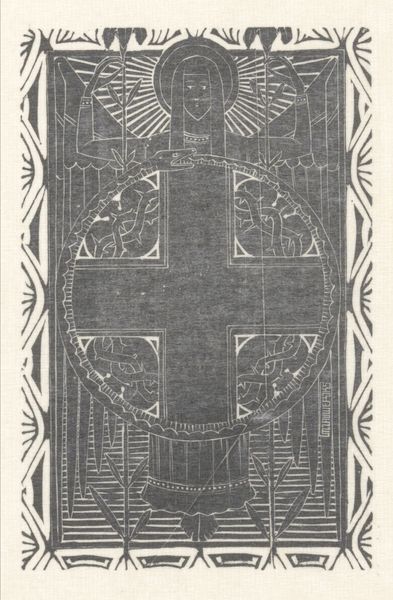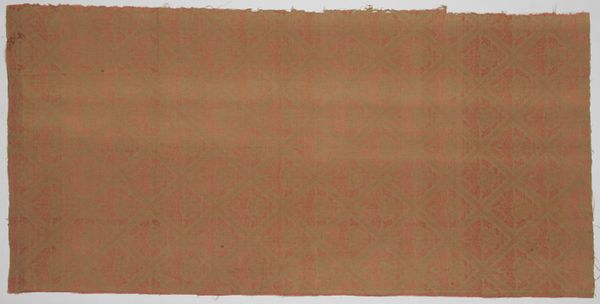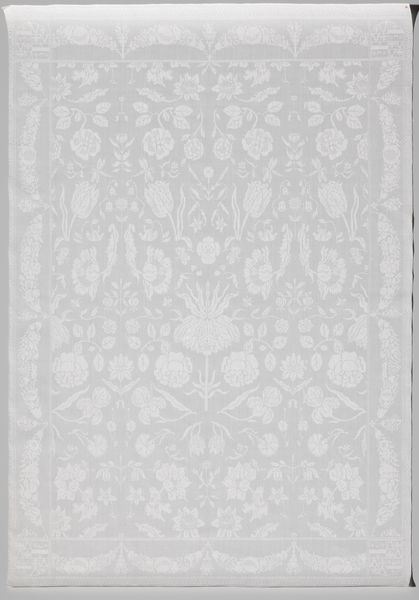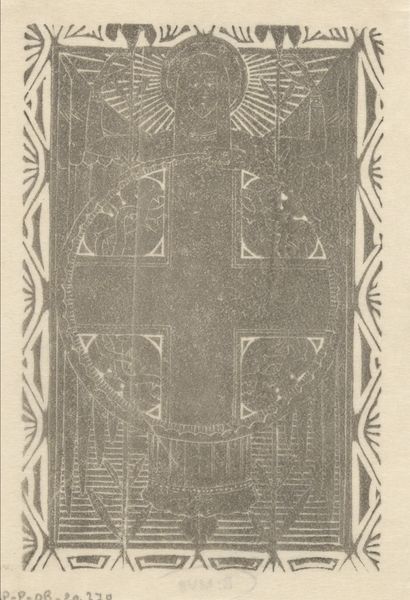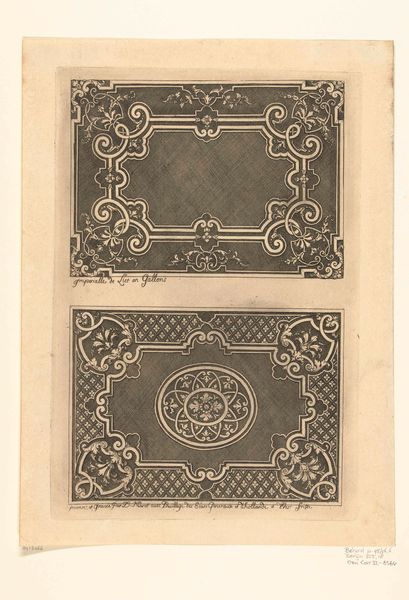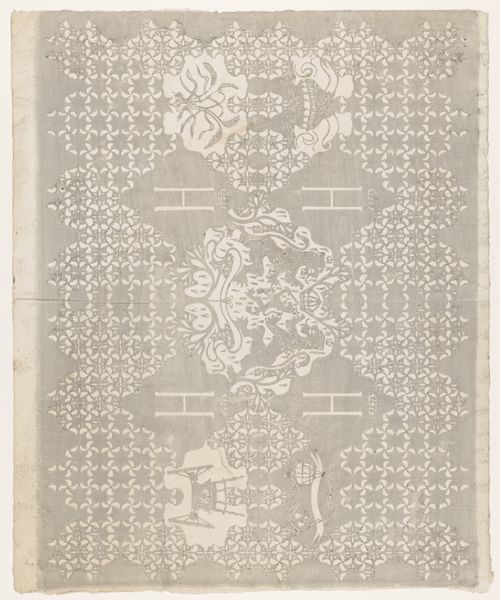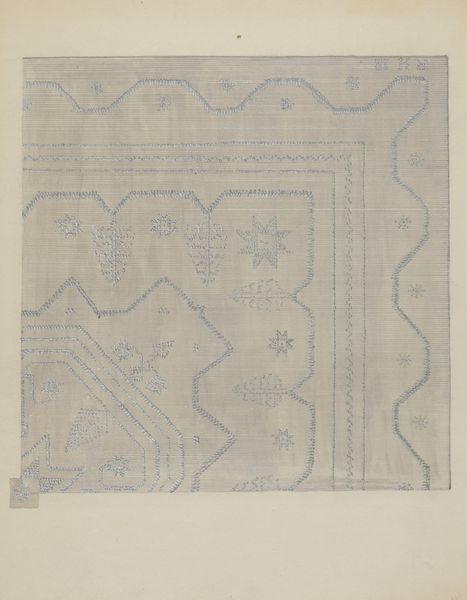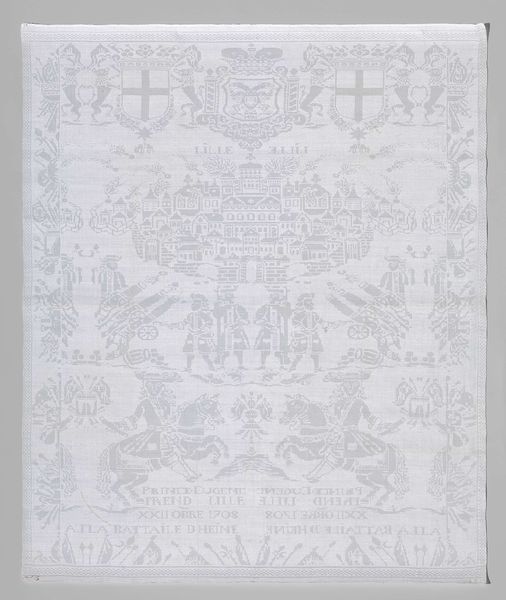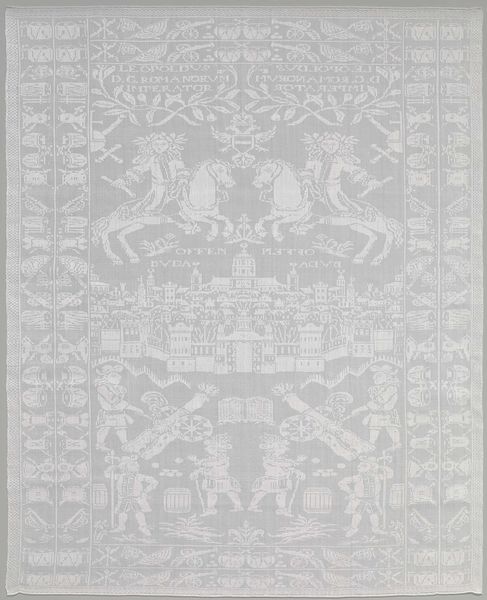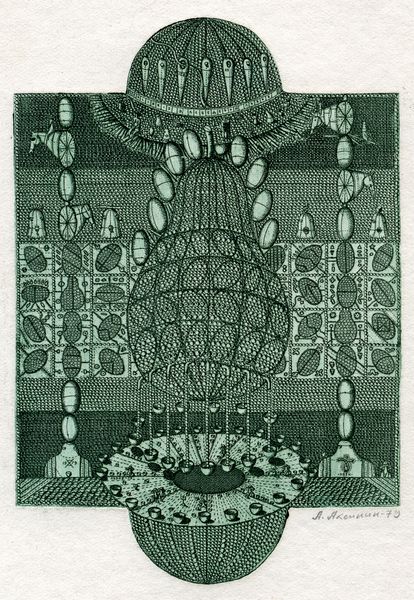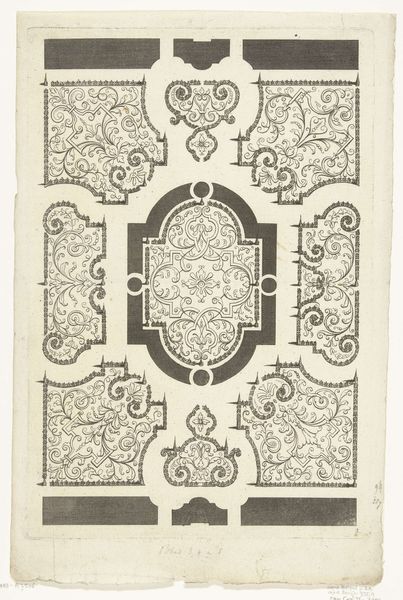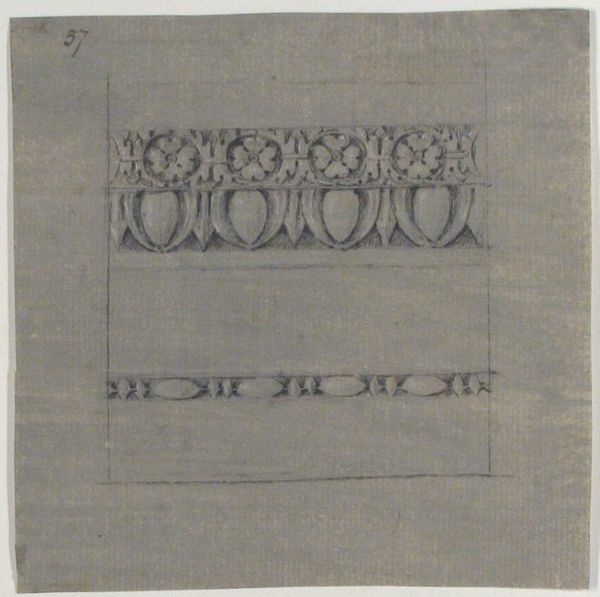
weaving, textile
#
weaving
#
textile
#
embossed
#
line
Dimensions: 92.1 × 82.5 cm (36 1/4 × 32 1/2 in.)
Copyright: Public Domain
Curator: We are looking at a “Napkin”, a woven textile created around 1800 by David Dewar & Sons, currently held in the collection of The Art Institute of Chicago. Editor: At first glance, it reminds me of the linen my grandmother used, a ghost of dinners past, full of faded impressions and untold stories held within the weave. Curator: Textiles like these offer valuable insight into the social history of dining and domestic life in the period. We can glean clues about trade networks, technological developments in weaving, and the material culture accessible to different social classes. The very fact that we preserve such everyday objects shows the value people gave to even the most functional items. Editor: Absolutely. The closer I look, I notice the embossed or etched detailing. The intricate designs—I see something of a radial sunburst and maybe floral elements—bring a formality to an otherwise very common household object. This elevates the idea of dining, a gesture of hospitality. Curator: Indeed. Objects like these are very much about status and self-representation. A well-set table was a display of wealth, refinement, and social standing. The material used, the quality of the weaving, and the pattern all speak volumes about the host. Editor: So, what seems humble—a napkin, after all— becomes a stage for enacting these subtle performances of class. What remains unspoken and just simply present makes this artifact all the more impressive. It prompts me to consider, what stories do our objects whisper about us today? Curator: Precisely, this object's value lies in its connection to lived experience, illuminating how daily routines and social values intertwined centuries ago. Examining the "Napkin" lets us weave together an understanding of a world so unlike ours in many ways, but familiar in others.
Comments
No comments
Be the first to comment and join the conversation on the ultimate creative platform.
